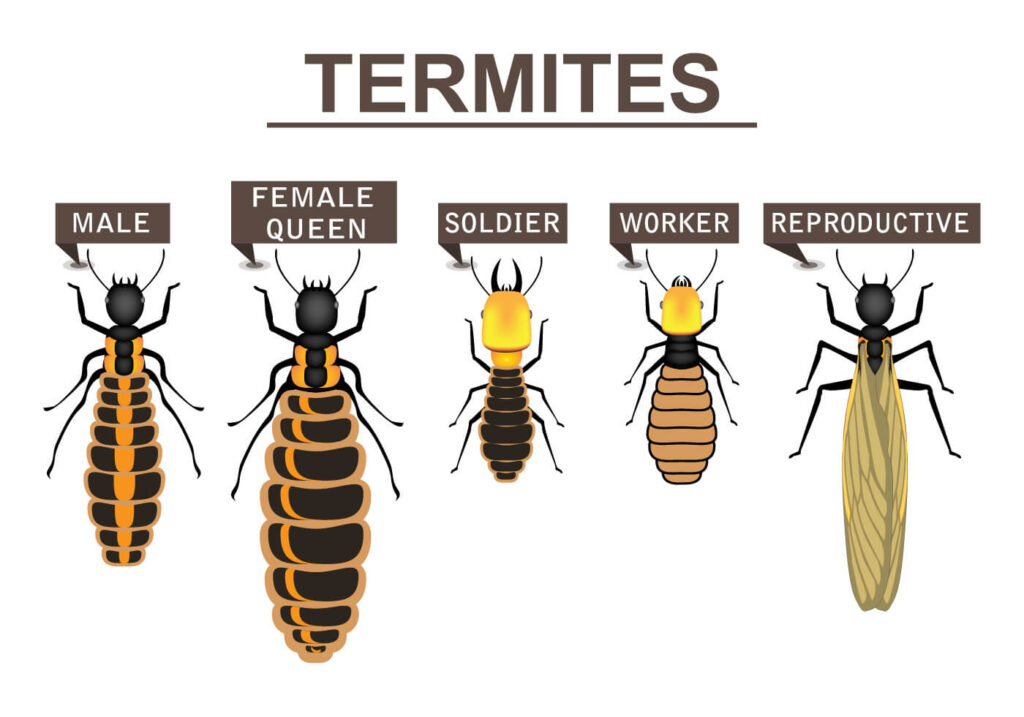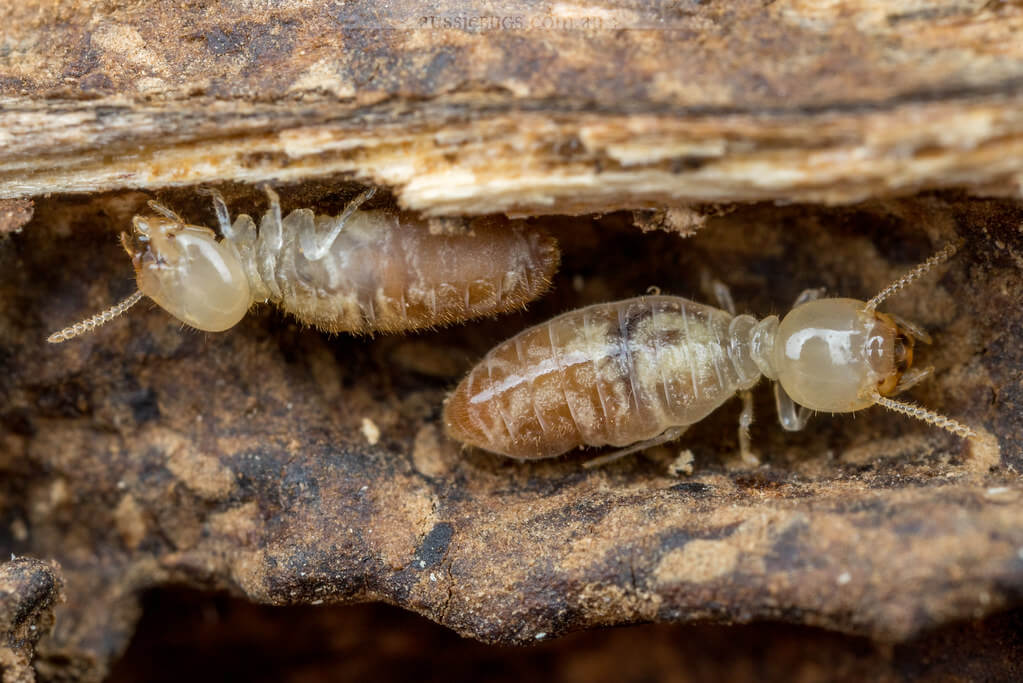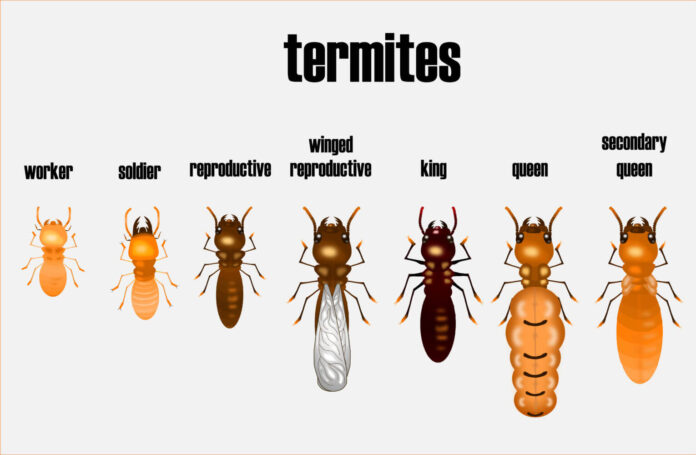Are you wondering how big are termites and how much damage they can cause? Termites are tiny insects, but they can create huge problems for your home. They eat wood and can do a lot of damage before you even notice them. Understanding how big are termites, how to spot them, and how to treat them will help you protect your property.
How Big Are Termites: Termite Size and Appearance

Termite size and appearance are important for anyone asking, “how big are termites?” The answer depends on the type of termite and its job in the colony. Here’s a helpful breakdown:
Worker Termites:
Worker termites are the most common kind in a colony. How big are termites like workers? They are about 1/8 to 3/8 inch long. Their bodies are soft, pale, or cream-colored. If you see termites where wood is damaged, you are probably looking at workers.
Soldier Termites:
Soldier termites are close in size to workers, about 1/8 to 3/8 inch. If you ask, “how big are termites like soldiers?” they have bigger heads and strong jaws to defend the colony. Their heads may look a little darker.
Reproductive Termites or Swarmers:
Also called alates, these termites leave the colony to start new ones. They are larger than workers, measuring up to 1/2 to 1 inch long. They have wings usually longer than their body. These wings are often a sign of termite swarms when found near windows and doors.
Queen Termites:
The queen is the largest termite in a colony. She can grow to be over 1 inch long, with some species having queens as large as 2 to 3 inches. Queens are responsible for laying eggs and are rarely seen.
Termites generally range from 1/4 to 1/2 inch long on average. Their bodies are straight, unlike ants, which have pinched waists. They also have straight antennae and soft, creamy bodies. Termite identification often starts with these features.
Read Our Latest Guides on Termites:
- Tiny Baby Termites? Everything You Need to Know in 2025
- What Do Baby Termites Look Like? Termite Identification and Treatment in 2025
- Baby Termites vs Ants? How to Tell the Difference
How to Identify Termites

Spotting termites early can save your home from severe damage. Here are some common termite signs to watch for:
- Mud Tubes: Subterranean termites build small, muddy tunnels to connect their colony to food sources. Look for these on your walls, foundation, or crawlspaces.
- Discarded Wings: Swarming termites shed their wings after finding a place to start a new colony. You might spot these near windows, doors, or light sources.
- Damaged Wood: Termites eat wood from the inside out. Tap on wood to check for hollow sounds or look for blistering and sagging areas.
- Frass (Termite Droppings): Drywood termites leave small wood-colored pellets around their nests.
- Tight Doors or Windows: Termites can warp wood, making doors and windows hard to open or close.
When you spot any of these termite signs, use your new knowledge about how big are termites to confirm what you’re seeing. Early termite identification and action save money and prevent major repairs. Follow Us on Facebook for the latest updates.
Treatment Options
If you discover termites, don’t panic. There are several termite treatment methods available:
Liquid Termiticides:
Liquid barriers are applied to the soil around your home’s foundation. These kill termites as they enter the treated area. It’s a straightforward and effective method to block an infestation.
Termite Baits:
Bait stations placed around your home attract termites. When termites consume the bait, it poisons the entire colony. This is a long-term but effective solution.
Professional Fumigation:
This method involves tenting the entire home and using gases to kill termites. It’s usually reserved for extensive infestations.
Foams and Dusts:
Special foams and dust sprays can be injected into walls or cracks where termites are active. They work well for targeted treatments.
Termite Prevention Steps to Avoid Future Infestations:
- Keep firewood and wooden debris away from your home’s foundation.
- Fix leaks quickly to avoid moisture near wood.
- Seal cracks or gaps in your home’s structure.
- Maintain a dry environment, as termites thrive in damp areas.
Conclusion
Now you know how big are termites and why it matters. These insects may be small, but they can do big damage if you ignore them. Most termites range from 1/4 inch to 1 inch long, with some queens being even bigger. Look for termite signs and use smart termite identification for early action. The right termite treatment keeps your home safe, no matter how big are termites in your area.
Don’t wait until termites get out of control. Take steps now to protect your home and your family. Regular checks and good prevention make a huge difference.
How Big are Termites? General FAQs
What is the best treatment for termites?
Liquid termiticides and termite baits are highly effective. Professional inspections will help determine the best approach for your situation.
Will you see termites after treatment?
Termites may still be visible for a short time if they aren’t killed immediately. Over time, professional treatments should eliminate them.
What is the best medicine for termites?
Professional-grade termiticides, such as those containing fipronil or imidacloprid, are excellent options.
How to spot treat termites?
Use foam or dust termiticides in specific areas where termites are active, such as cracks, crevices, or infected wood.
How to check termite damage?
Tap wooden structures to see if they sound hollow. Look for blistering, sagging wood, or piles of frass near wooden areas.
How long does termite treatment last?
Most termite treatments last up to five years, depending on the product and application method.
Is a house safe after termite treatment?
Yes. Once treatment is complete and air quality has been restored, your home is safe to re-enter.
What is the best time to treat termites?
Spring and summer are common times for termite swarms, making these seasons ideal for treatment. However, termites are active year-round in warmer areas.
Will termites come back after being treated?
They might return if prevention measures aren’t taken. Regular inspections and maintenance help keep termites away.



